Sometimes low expectations are the best thing that can happen to a game. Consider Tennis World Tour 2, for example, the follow-up to the disappointing original that can’t help but benefit from avoiding any comparison to that sub-par release. With a new developer on board in Big Ant Studios (oddly enough, the same studio behind the gaming world’s other big tennis title, AO Tennis 2), it has to be considered monumental progress that TWT2 simply feels like a finished game this time around.
Aside from that, the improved graphics and mechanics on the court — alongside a renewed focus on making online play an enjoyable experience — leads to the game being a respectable, if not exactly superlative, entry for all fans of the sport.
With that said, let’s venture into the weeds a bit more in this Tennis World Tour 2 review and take a closer look at what aspects of the game are winners and which others sail wide of the boundaries.
Tennis World Tour 2 Review – What I Like
Tennis School
For anyone who recalls my initial impressions piece on Tennis World Tour 2 after spending some time with a preview build of the game, my opinions couldn’t help but be heavily influenced by the fact that there was no tutorial available to help explain how to actually, you know, play the game. This predictably led to a lot of confusion about how to hit the ball as much of it didn’t seem to have any rhyme or reason.
Thankfully, access to the tennis school that’s included in the game clarified most, though not quite everything, about how to swing a racket. Without question, the biggest aspect of the game that was completely lost on me (because, again, it wasn’t explained) before tennis school is that there are precision shots, which you use by tapping a button, and power shots, which you use by holding down a button for longer. I had no idea precision shots even existed when playing the preview build, which goes a long way towards explaining why I didn’t feel like I had all that much control of any of my shots.
The tennis school does a nice job of walking you through the various controls by having you hit the ball at targets on the other side of the court. It did still take a little while to grasp how to properly direct your shots, which is partially a byproduct of having to use the left stick to both run for the ball and select where to hit — something that can feel like a bit of a conflict of interest at times.
There also isn’t a great explanation within tennis school of a fundamental component of the game, which is how to properly time your shots. With every ball you hit, there will be a message on the screen displaying feedback for your timing on a spectrum ranging from “too soon” to “good” to “perfect” to “too late.” But the tennis school doesn’t ever really tell you when is the ideal time to release a button, whether it’s a precision or power shot, leading to a lot of trial and error. (Hint: get yourself in position to hit the ball first and then release a button right around the time your player starts winding up.)
Service
How to serve has been completely reworked in TWT2, and the new system is an adequate mini-game that’s mildly challenging and allows for myriad outcomes. Consisting of the toss and then the actual contact with the ball, both components involve properly timing a button push or release to achieve the best possible power and accuracy. It can be a little tricky to pinpoint where you want the ball to go as holding down any direction too long is likely to end up as a fault. For the second serve, it’s usually best to stick to a safe serve by tapping a button instead of holding it down, which will sacrifice some power but at least won’t cost you a point with a double fault.
Depending on your input, you can see balls get painted down the lines, go long and wide or into the net (even lets that strike the net and land in the service zone), and it feels rewarding when you do deliver a serve exactly how you desired. But even when I’ve been able to unleash a serve with maximum power right on a line, I’ve still yet to get an ace against a CPU opponent. It’s unclear whether this means the AI is perhaps just not quite tuned properly (they also do tend to hit the ball out a lot) or there’s another layer of serving that’s still eluding me.
Graphics & Presentation
With the likenesses of so many professional tennis players in the game (nearly 40 at launch), they all resemble their real-life counterparts closely enough for the most part, but they do tend to get a little waxy in close-ups. Still, it’s nice to see how they can get expressive after points, whether in celebration or disgust. And the differences between the skills of elite players like Federer and Nadal and the lower-ranked players are evident on the court.
One of the biggest reasons that the gameplay in TWT was so mediocre was that there were a limited number of animations, and it was not uncommon to have the wrong animation trigger — or even no animation trigger at all — when you went to hit a shot. Thankfully, the animations in this game are more fluid across the board, but there are still some awkward moments here and there where players warp to the ball a bit or contort themselves strangely while returning a ball.
The environments and stadiums in the game with all of their various surfaces and conditions allow for plenty of variety, and they are immersive enough without being spectacularly detailed re-creations or anything. The addition of disputes adds another enjoyable element — where the flyover camera reveals whether a ball was in or out — and I find myself challenging calls that were obvious just for the fun of using this new feature.
Online Play
Anyone who played TWT remembers how the developers touted online play prior to release, only to not be able to deliver on that promise until well after the game had come out. Even when it finally was implemented, the game was a frustrating mess in online matches thanks to unavoidable and unplayable lag bogging down every attempt.
Thankfully, this follow-up has vastly improved the online play to the point where there was no noticeable lag in the matches that I played. In fact, the game even plays pretty well when going head-to-head against someone, especially when you become engaged in a long rally against the opponent who can see you sprinting from one side of the court to the other, or to the net to retrieve a drop shot before the ball bounces a second time.
However, there are still a few noticeable bugs in online matches. I’ve seen multiple shots from opponents that looked way out but were somehow called in, and then they were awarded the point when I didn’t play it back.
It must say something about the matchmaking that for my very first online match I was pitted against the player who was at the very top of the leaderboards. This probably isn’t exactly the best way to initiate people into the online experience. For what it’s worth, I may have been beaten pretty soundly by the top-ranked player in the video game equivalent of Federer facing off against a 10-year-old child, but I did get a couple of points against said player and was still able to get involved in a number of fun rallies.
There’s also the new option of being able to play doubles both locally and online, which is nice if you’re hanging out at home with someone and want to take on other duos, but it can’t help but limit potential matchups when you’re only able to team up locally and not online with a partner.
Career Mode
It probably should be said up front that the career mode in TWT2 isn’t all that different than the one in TWT, but it does an admirable job of giving you a variety of things to do over the course of a year while you grind away at improving your player’s attributes during your climb to be the best in the world.
The main thing that you’ll probably want to do is enter and play in tournaments where you’ll face off against CPU opponents and attempt to proceed through the bracket to the finals. It’s nice to see that as a scrub just starting out you’re not necessarily expected to go toe-to-toe against the elite players of the world. Instead, you can test your mettle against lesser players with similar attributes as yours until you’ve become a little more established.
It’s hard to beat the allure of hoisting some sort of trophy, but there are other things to do besides compete in events and there are times when the best thing to do might be nothing at all in order to recover your stamina. There are charity and exhibition matches that can generate you some coins, training that gives you some fun challenges to complete in exchange for XP, or you can hire and fire your coaches and agents if you feel like different ones can give you bonuses that align more with your priorities.
As you do various activities, you’ll be able to level up and decide how you want to spend your attribute points and all of the coins you’ve accumulated. By choosing how you want to allocate those attribute points, you essentially are deciding what you want the strengths and weaknesses of your character to be. As for the coins, you can put those towards equipment and clothes or on packs of cards (more on that shortly).
Tennis World Tour 2 Review – What I Don’t Like
Card System
In theory, there’s perhaps some merit to how the card system works in TWT2, but in execution it kind of feels like it belongs in more of an arcade game and is at odds with the tennis simulation this game is attempting to be elsewhere. The worst part is that you’ll need to regularly spend your coins in order replenish your hand of five cards that can be played because they all have a limited duration, whether that’s one match, one set, one game or even one point.
This wouldn’t be so bad if the cards actually gave better upgrades and if so many of them were not so lame. While you might have a somewhat useful Support card that can help you for a full match and give your player a boost on something like your precision volley, the majority of the cards you get from packs will instead give a small decrease to something like your opponent’s underhand serve ability for a game, which they’ll probably never use in a whole match (let alone a whole game).
Though there was some attempt in the preview event to argue that the cards are meant to simulate moments of a match when a player is particularly locked in, this doesn’t really hold up under closer scrutiny. It’s not all realistic to think that players can get themselves into some sort of mysterious zone where they’re really seeing the ball well but only when their opponent is serving ball underhand to them. Even then, how is it that someone’s own abilities somehow transfer to making your opponent worse instead of simply making you better?
Suffice to say, there’s a lot here that doesn’t have much logic to it. Perhaps there’s a way to make a card system like this work but it would need a pretty substantial overhaul in order to make it feel more organic.
Creation Suite
Once again, the creation suite for your player in TWT2 might initially look decent but that’s only because the one in TWT was so atrocious. Where you previously had to choose between a handful of pre-made characters so that you’d invariably end up playing against your doppelganger, at least you can create someone who looks unique now.
However, it’s hard not to feel a little disappointed when comparing the creation suite to similar games like NBA 2K or even the recent PGA Tour 2K21. Rather than feel like you’re sculpting the features of your player to look exactly how you want, it’s more as if you’re only able to choose between a handful of options, swapping out different mouths and noses as if your player was some sort of human Mr. Potato Head.
This is progress to be sure, but it still needs more customization to belong in the same conversation as other modern sports games.
Bottom Line
It’s true that the bar may have been set pretty low by TWT, but TWT2 still deserves plenty of credit for righting the course of this franchise and pointing it towards potentially becoming a top-notch tennis simulation. Still, it’s not quite there yet because the developers need to either refine — or lose entirely — the bonuses of its card system and allow for more individuality from its creation suite.
Regardless, when you’re engaged in long rallies against opponents online and trying to outfox them with the variety of shots at your disposal, it all begins to feel like real tennis in a way that was sorely lacking the first time around, particularly online.



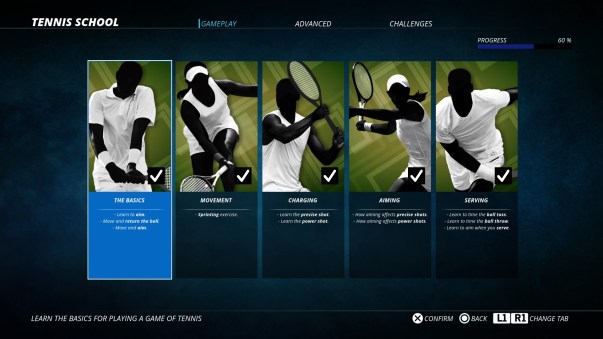
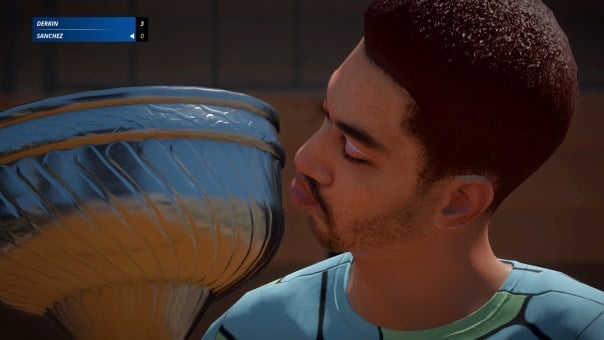
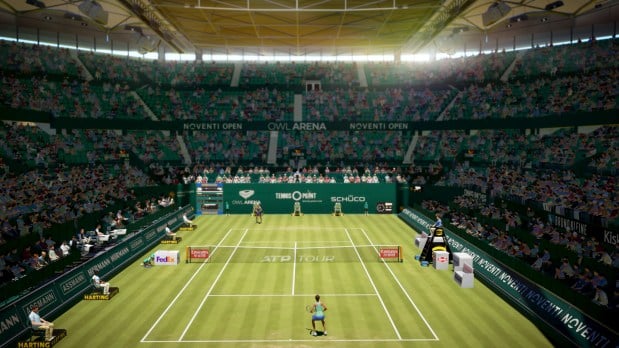
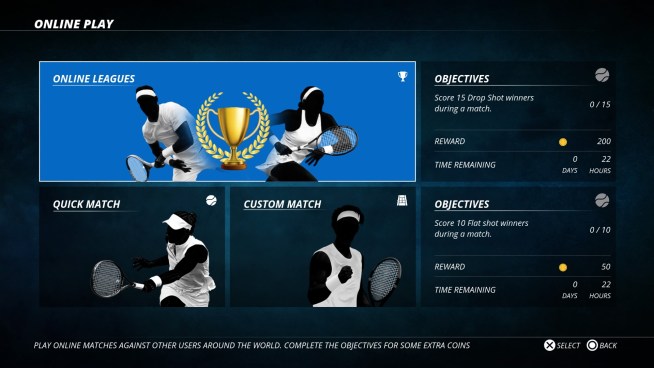
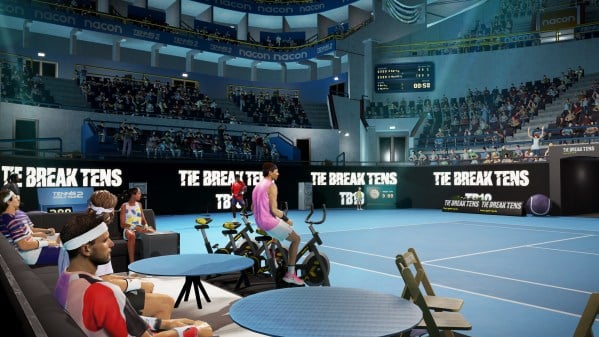
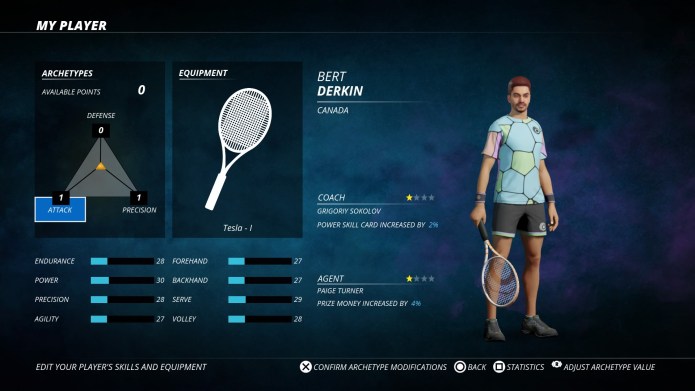
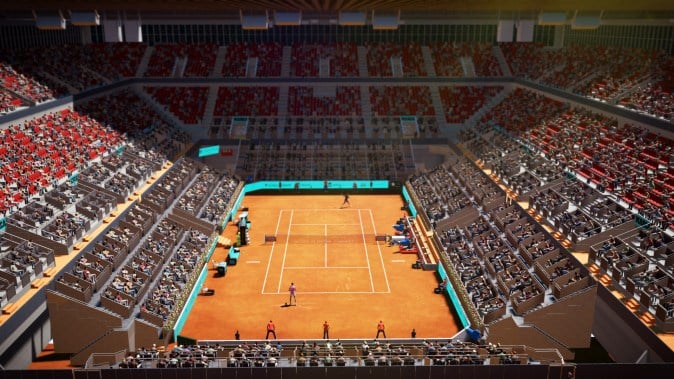
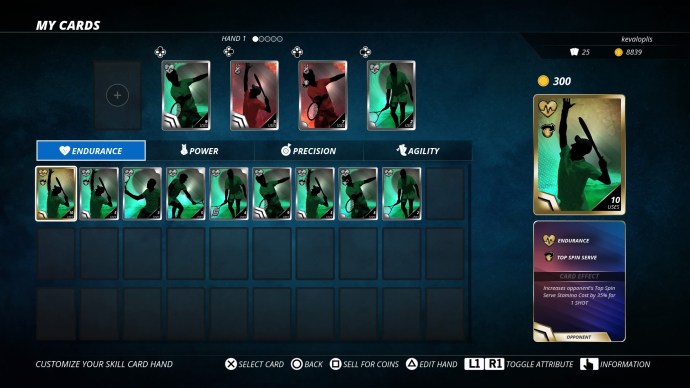






Published: Sep 28, 2020 11:00 am